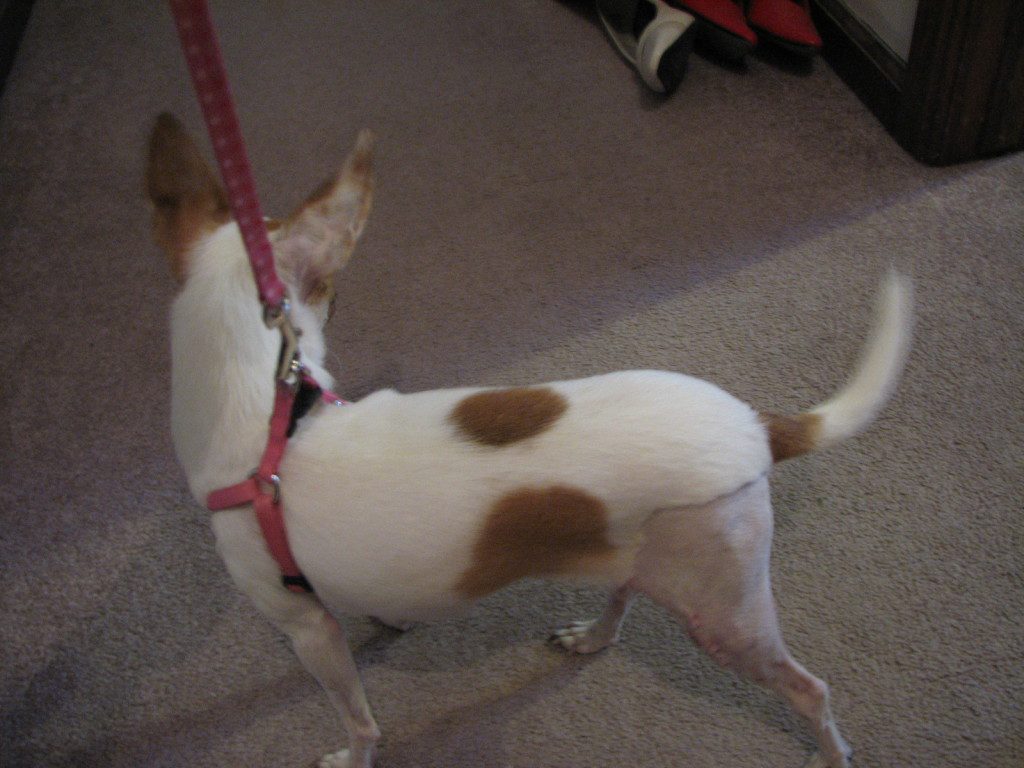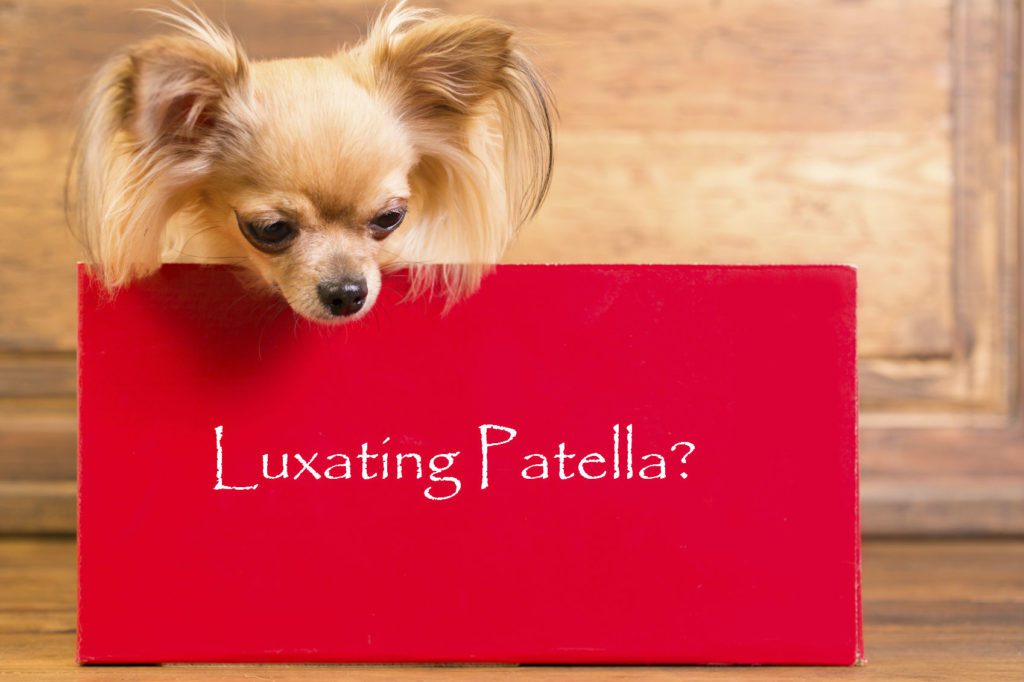What is a floating kneecap?
It is also known as a luxating patella. It is when the dog’s kneecap or patella moves out of its normal position. The patella in dogs is shaped like an almond and it assists in knee extension.
How do you know if your dog has it?
My little Chihuahua, Pebbles had it in both knees. Before we moved to where we are now, Pebbles and her brother, Chico used to race each other around the corner every time I let them out at the same time. It was so cute, I used to watch them before I shut the door and went back to what I was doing. One day I let them out and all of a sudden she squealed and held up her right hind leg and the poor thing just looked at me and her eyes showed that she was in pain. I went running out to get her, picked her up, and carried her back in the house. I just cradled her for a few minutes.

When I put her back down, she started running back to the door wanting out again. I was totally baffled! But, since she seemed fine again I just thought that whatever it was, it was a one-time thing. A couple of days later it happened again so I took her to our veterinarian. That is how I found out about it. That is typical of signs and symptoms of a floating kneecap. When the dog holds up the leg the quadriceps muscles relax and lengthen and the patella returns to its normal position.
Photo: Pebbles after surgery
What causes a floating knee cap?
The causes of a floating knee cap are generally genetic malformation or trauma. It also depends on the size and breed of the dog. A genetic predisposition happens in small and tiny dogs. These include:
- Chihuahuas
- Yorkies
- Miniature and toy Poodles
- Maltese
- Jack Russell Terriers
- Pomeranians
- Pekingese
- Papillon
- Boston Terriers
It is important to mention here that obesity is often the cause of a floating knee cap and is different than the genetic causes. Obesity is a serious problem for many reasons, but it is especially serious for small breeds. Because of obesity, the patella may start to slip, but obesity by itself is enough to put too much strain on the knees. The tendons and ligaments around the kneecap that hold it in place can weaken and tear under the weight and the kneecap will start to slip. Thus the dog may never show signs until he/she becomes overweight, even when the joint is formed perfectly formed.
What are the treatments?
A floating knee cap is not generally a serious condition although it is painful for the poor dog when it happens.
Natural Treatments
Some helpful vitamins are:
- Ascorbic acid (a kind of Vitamin C)
- Vitamin E
- Vitamins B1 and B6

Some helpful supplements are:
- Omega-3 fatty acids (fish oil)
- Glycosaminoglycans
- Chondroitin sulfate
- Bioflavonoids (found in colorful vegetables, fruits, and green tea)
Some helpful minerals are:
- Manganese
- Magnesium
- Sulfur
- Selenium with fish oil
- Iron
- Copper
- Zinc
- Calcium
These are some exercises to strengthen the quadriceps muscles:
- Have your dog move from a sit to a stand several times in a row.
- If you have stairs (preferably carpeted), have the dog ascend and descend the stairs three to five times, several times a day.
- If you don’t have stairs, find a steep hill and have your dog walk up and down and zig-zag across the face of the hill.
- Teach him/her to army crawl
- Underwater treadmills or swimming are excellent exercises to strengthen the surrounding knee structures.
- Apply leg weights above the hock and take the dog for a walk.
Others turn to surgery to help.
According to Dr. Karen Becker, DVM, there are four levels of severity of a floating knee cap. They are as follows:
- Grade 1: When the patella pops out but pops right back in on its own.
- Grade 2: When the kneecap pops out of place and doesn’t always pop back in automatically, sometimes requiring manual manipulation to re-seat it.
- Grade 3: When the kneecap sits outside its groove most of the time but can be manually positioned back in the groove, where it stays temporarily.
- Grade 4: The worst-case scenario. When the kneecap sits outside the groove all the time, and won’t stay in the groove when it is manually popped into place.
If your dog is in intense pain most of the time, surgery may be the best option for a floating knee cap. Always consult your veterinarian before making any decisions about treatment.
Video by Dr. Karen Becker
Save
Save
Save
Save
Save
Save
